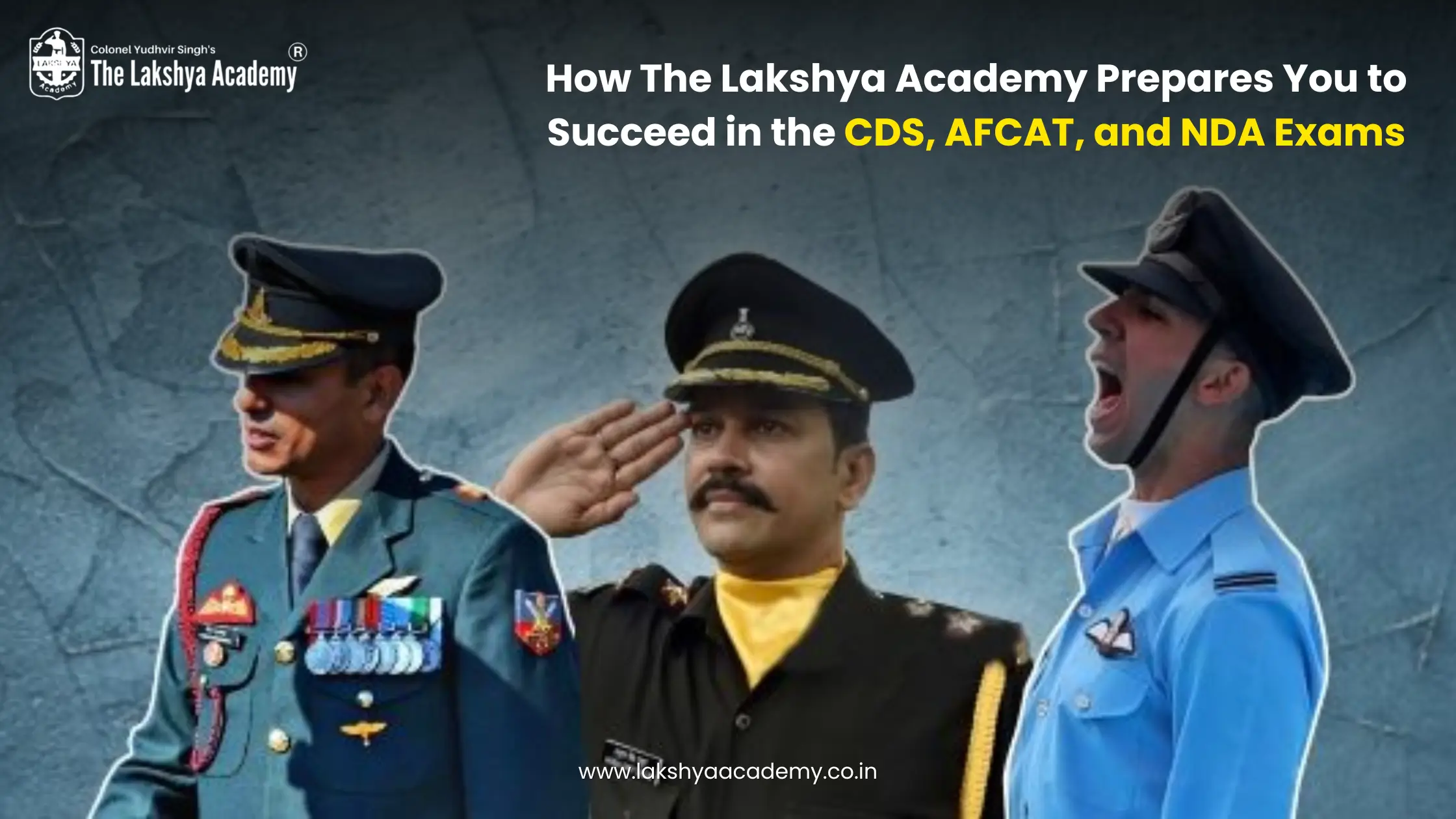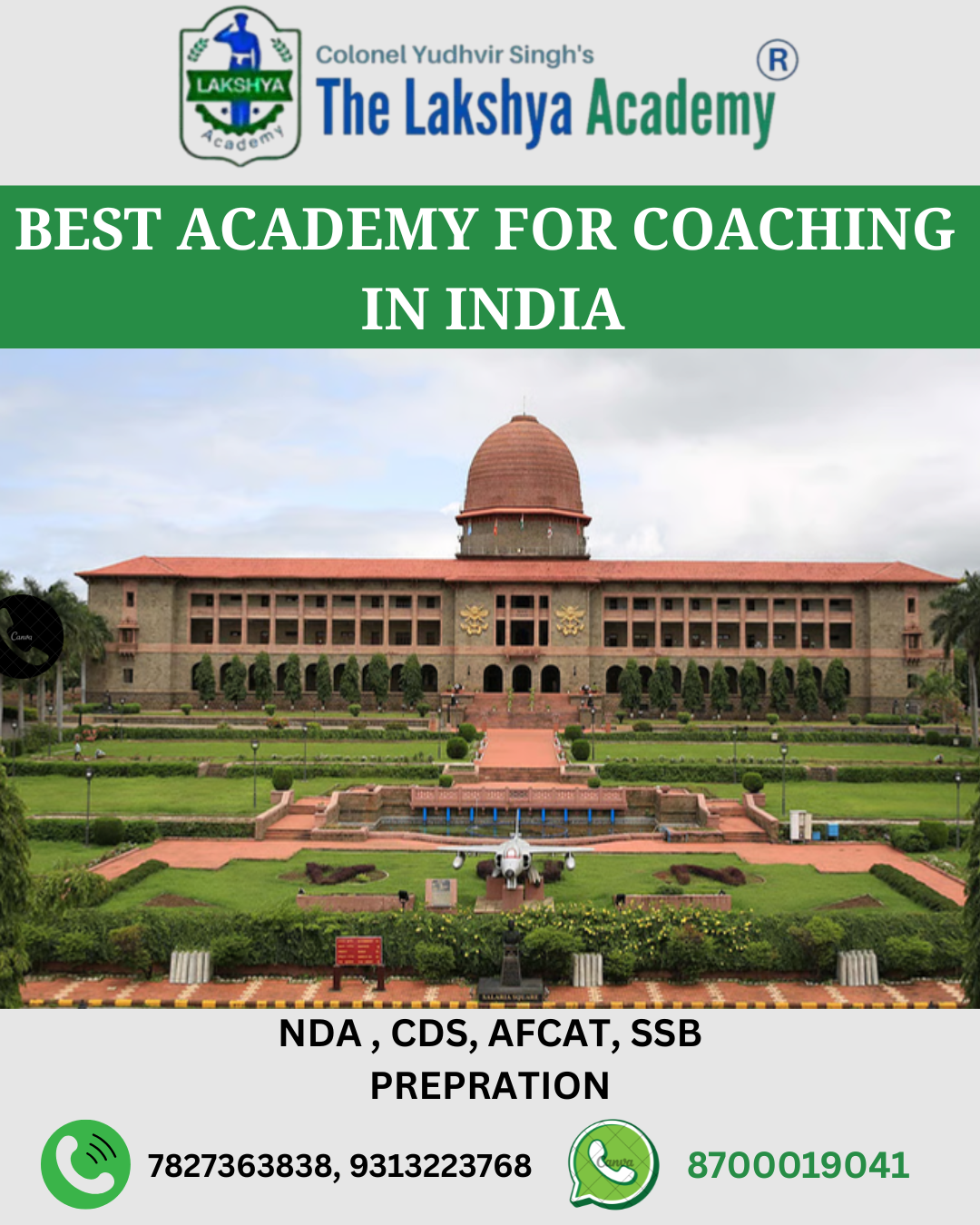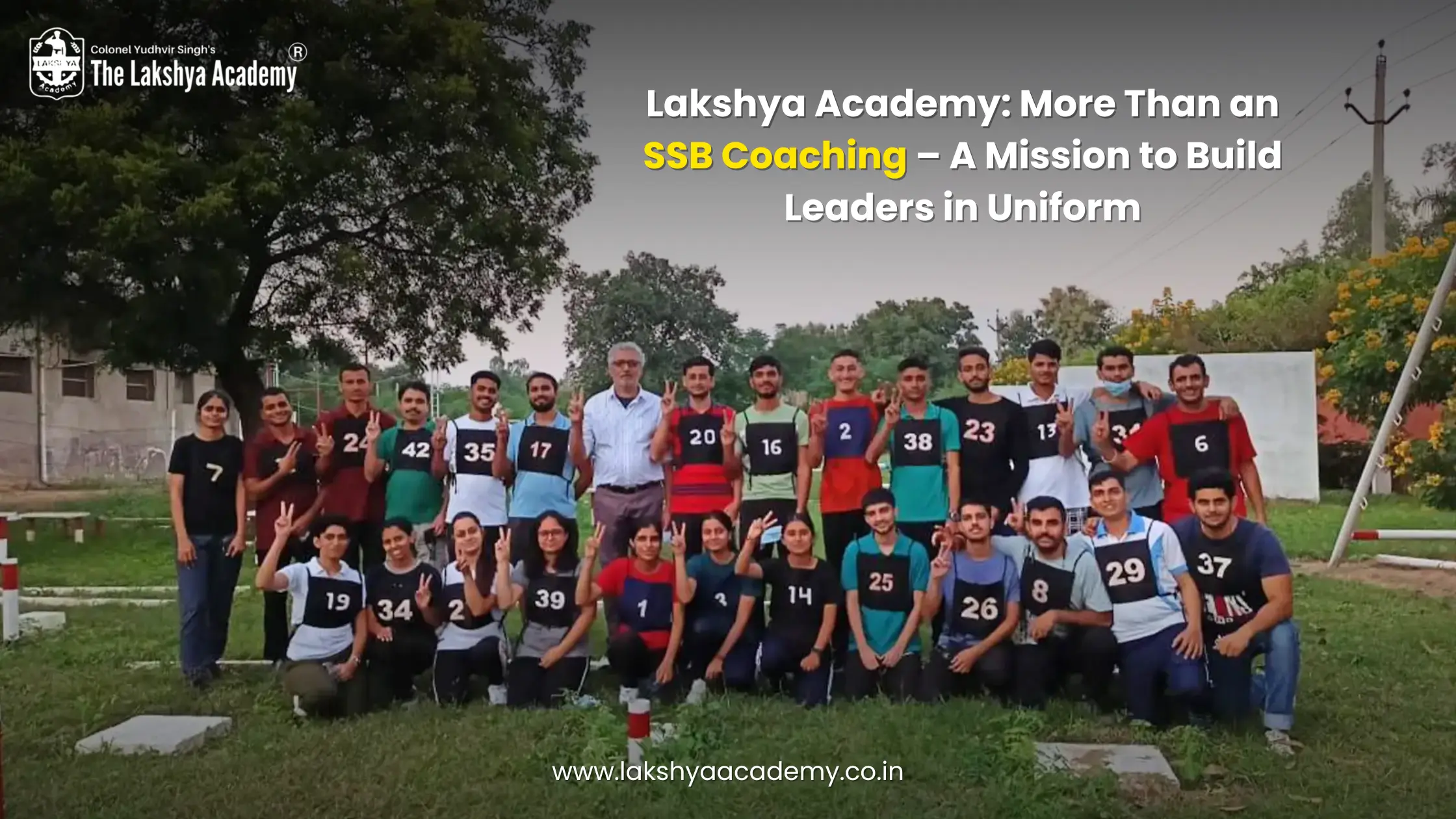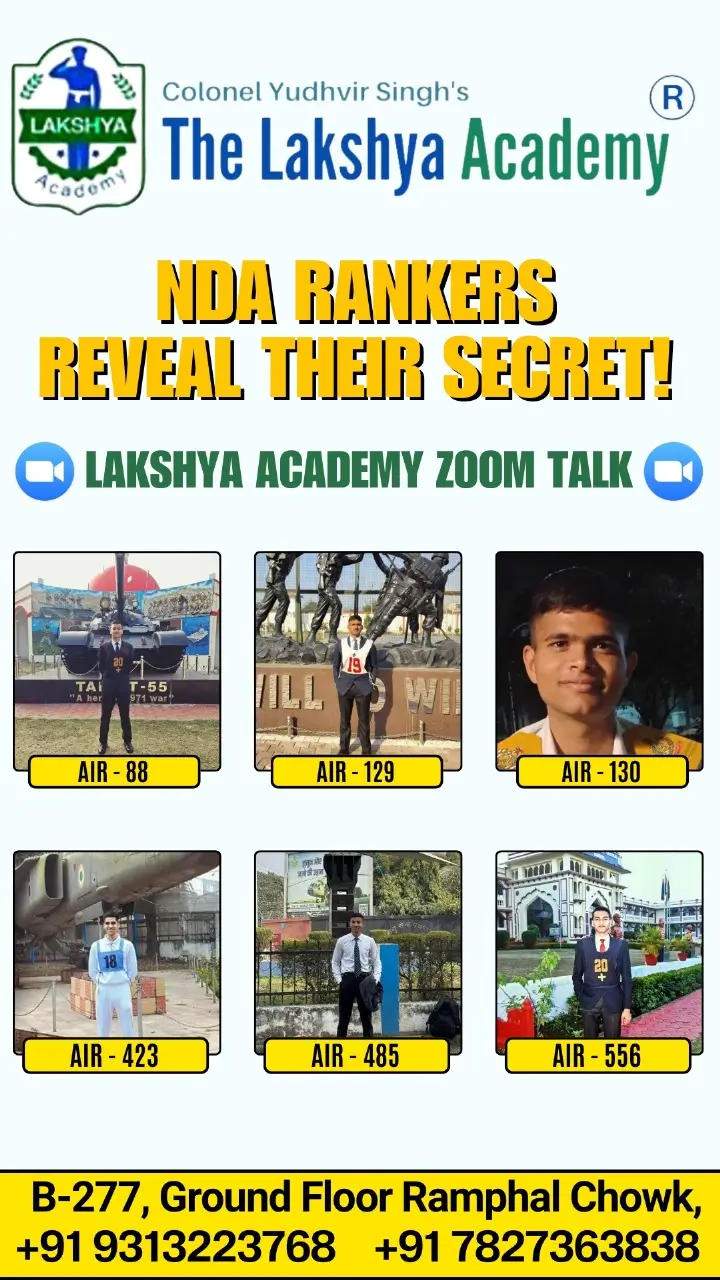Selecting between CDS, AFCAT, NDA exam is a defense candidate’s most important choice. Each of these examinations leads to elite defence careers in the Indian Armed Forces—but they differ from one another in terms of eligibility criteria, exam pattern, and defence careers available. This detailed handbook from The Lakshya Academy will assist you in knowing the differences and preparing with clarity.
Understanding CDS and AFCAT: The Basics
CDS, organized by UPSC, is your doorway to the Indian Army, Navy, and Air Force, based on your qualifications and academy preference. It accepts male and female candidates (based on the academy) and is conducted twice a year.
AFCAT, organized by the Indian Air Force, is only for candidates who want to join the Air Force—specifically in the Flying, Technical, and Ground Duty branches.
CDS AFCAT NDA Exam: Comparison at a Glance
| Feature | CDS | AFCAT | NDA |
| Conducting Body | UPSC | Indian Air Force | UPSC |
| Target Services | Army, Navy, Air Force | Air Force only | Army, Navy, Air Force |
| Gender Eligibility | Males (IMA, INA, AFA), Females (OTA only) | Male & Female | Male only |
| Educational Requirement | Graduation (varies by academy) | Graduation/Engineering | 10+2 with PCM (for Air Force/Navy) |
| Age Limit | 19–25 years | 20–24 (Flying), 20–26 (Ground Duty) | 16.5–19.5 years |
| Selection Process | Written + SSB + Medical | Written + AFSB + Medical | Written + SSB + Medical |
| Entry Academies | IMA, INA, AFA, OTA | AFA only | NDA, followed by IMA/INA/AFA |
Who Should Choose CDS?
If your ambition is to serve in the Army or Navy (in addition to the Air Force), CDS is your exam. The CDS pathway offers:
- IMA (Indian Military Academy): For male graduates aspiring to serve in the Army.
- OTA (Officers Training Academy): For short-service commission in the Army (open to both males and females).
- INA (Indian Naval Academy): For male engineering graduates.
- AFA (Air Force Academy): For candidates with physics and math at 10+2 and a graduate degree.
CDS is ideal for aspirants who want multiple service options and are comfortable with a more general exam pattern (including English, GK, and Mathematics).
Who Should Choose AFCAT?
If you are passionate about the Indian Air Force and want to specialize in Flying, Technical, or Ground Duty branches, AFCAT is the right choice. Some highlights of AFCAT:
- Allows candidates from diverse academic backgrounds to apply.
- Offers entry into Flying Branch (SSC only), Ground Duty (Technical and Non-Technical).
- The AFCAT paper is less GK-heavy compared to CDS and includes sections like military aptitude and reasoning.
Female candidates particularly benefit from AFCAT, as it opens up significant opportunities in the Air Force for Short Service Commission roles.
NDA (National Defence Academy)
Conducted by UPSC, NDA is for candidates who:
- Are male, aged 16.5 to 19.5 years
- Have completed or are appearing for 10+2
- Want early entry into the Army, Navy, or Air Force
NDA cadets are trained together and later commissioned into their respective academies.
Exam Pattern Comparison: CDS vs AFCAT
CDS Exam Pattern
- For IMA, INA, AFA:
- English: 100 marks
- General Knowledge: 100 marks
- Elementary Mathematics: 100 marks
- For OTA:
- English: 100 marks
- General Knowledge: 100 marks
AFCAT Exam Pattern
- AFCAT Written Exam (for all branches):
- General Awareness
- Verbal Ability in English
- Numerical Ability
- Reasoning and Military Aptitude Test
- Total Marks: 300
- EKT (Engineering Knowledge Test): Only for technical branches (additional 150 marks)
NDA
- Mathematics – 300 marks
- General Ability Test – 600 marks
Includes:
- English
- General Knowledge (Physics, Chemistry, History, Geography, Current Affairs)
CDS is often considered tougher due to its UPSC-level General Knowledge and Math sections, while AFCAT tests more applied aptitude.
Selection Procedure and Training Duration
Both exams require candidates to clear the SSB (CDS) or AFSB (AFCAT) interviews, which include psychological tests, group tasks, and personal interviews.
- CDS Training:
- IMA: ~1.5 years
- OTA: ~49 weeks
- INA: ~1 year
- AFA: ~1 year
- AFCAT Training:
- Flying Branch: ~74 weeks
- Ground Duty: ~52 weeks
Which Exam is Competitive?
CDS is usually more competitive because of the sheer volume of candidates and UPSC’s strict standards. AFCAT, however, has a marginally higher success rate but has the added complication of a technical paper (EKT) for some streams.
Each exam is tough and demands concerted preparation, correct strategy, and guidance from a well-known coaching academy such as The Lakshya Academy.
Why Prepare with The Lakshya Academy?
At The Lakshya Academy, we know that CDS and AFCAT are gateways to a life of honour, commitment, and national service. Our training method centers around:
- Focused CDS and AFCAT courses, not packaged with other unconnected exam preparation.
- Defence background and SSB-experienced expert mentors.
- Mock tests on a regular basis, physical training, and personality development.
- Personal mentoring and doubt-clearing sessions.
- Real-time feedback and success strategies designed specifically for each student.
Which Exam Should You Choose?
NDA: Ideal for young aspirants (10+2 pass) looking for early entry into the armed forces.
CDS: Best for graduates aiming for the Army, Navy, or Air Force with long-term commission options.
AFCAT: Focused on the Air Force with attractive roles for both male and female candidates.
Final Verdict: CDS or AFCAT?
There is no one-size-fits-all solution—it depends on your career aspirations, educational background, and service choice. If you want more opportunities with all the forces, choose CDS. If flying or joining the Indian Air Force in a technical or administration field is your aspiration, AFCAT is the way to go.
Whichever exam you opt for, The Lakshya Academy is here to assist you with accuracy, discipline, and unparalleled guidance.
Need Personalized Guidance?
Don’t know if you should take CDS or AFCAT? Call us or come to our centre in Delhi and discuss with a mentor. We’ll assist you in laying the correct strategy based on your profile and goals.





